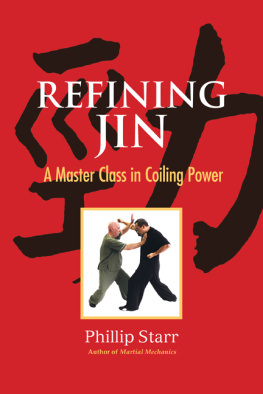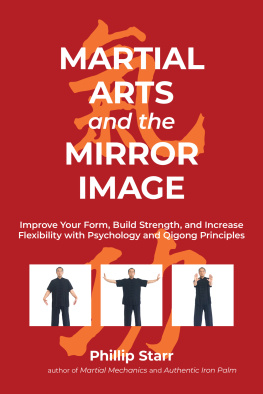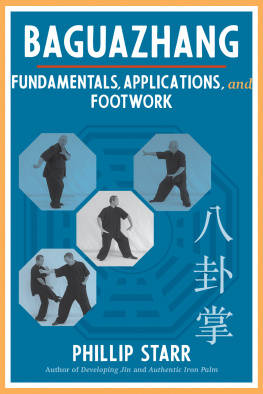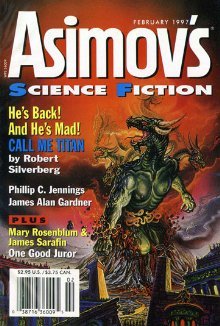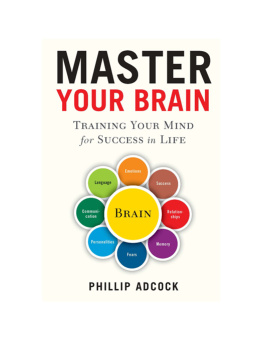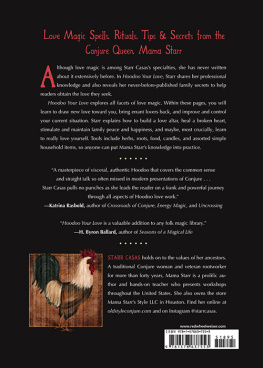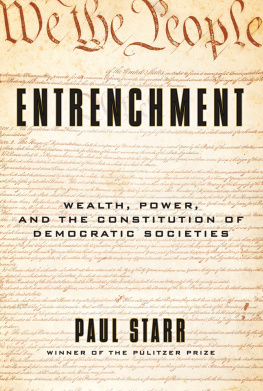Phillip Starr - Refining Jin: A Master Class in Coiling Power
Here you can read online Phillip Starr - Refining Jin: A Master Class in Coiling Power full text of the book (entire story) in english for free. Download pdf and epub, get meaning, cover and reviews about this ebook. genre: Religion. Description of the work, (preface) as well as reviews are available. Best literature library LitArk.com created for fans of good reading and offers a wide selection of genres:
Romance novel
Science fiction
Adventure
Detective
Science
History
Home and family
Prose
Art
Politics
Computer
Non-fiction
Religion
Business
Children
Humor
Choose a favorite category and find really read worthwhile books. Enjoy immersion in the world of imagination, feel the emotions of the characters or learn something new for yourself, make an fascinating discovery.
- Book:Refining Jin: A Master Class in Coiling Power
- Author:
- Genre:
- Rating:5 / 5
- Favourites:Add to favourites
- Your mark:
- 100
- 1
- 2
- 3
- 4
- 5
Refining Jin: A Master Class in Coiling Power: summary, description and annotation
We offer to read an annotation, description, summary or preface (depends on what the author of the book "Refining Jin: A Master Class in Coiling Power" wrote himself). If you haven't found the necessary information about the book — write in the comments, we will try to find it.
Refining Jin: A Master Class in Coiling Power — read online for free the complete book (whole text) full work
Below is the text of the book, divided by pages. System saving the place of the last page read, allows you to conveniently read the book "Refining Jin: A Master Class in Coiling Power" online for free, without having to search again every time where you left off. Put a bookmark, and you can go to the page where you finished reading at any time.
Font size:
Interval:
Bookmark:

Copyright 2019 by Phillip Starr. All rights reserved. No portion of this book, except for brief review, may be reproduced, stored in a retrieval system, or transmitted in any form or by any meanselectronic, mechanical, photocopying, recording, or otherwisewithout written permission of the publisher. For information contact Blue Snake Books c/o North Atlantic Books.
Published by Blue Snake Books, an imprint of North Atlantic Books
Berkeley, California
Cover design by Jasmine Hromjak
Cover photo by Dan Gregory
Interior design by Happenstance Type-O-Rama
Printed in the United States of America
Refining Jin: A Master Class in Coiling Power is sponsored and published by the Society for the Study of Native Arts and Sciences (dba North Atlantic Books), an educational nonprofit based in Berkeley, California, that collaborates with partners to develop cross-cultural perspectives, nurture holistic views of art, science, the humanities, and healing, and seed personal and global transformation by publishing work on the relationship of body, spirit, and nature.
North Atlantic Books publications are available through most bookstores. For further information, call 800-733-3000 or visit our websites at www.northatlanticbooks.com and www.bluesnakebooks.com.
PLEASE NOTE: The creators and publishers of this book disclaim any liabilities for loss in connection with following any of the practices, exercises, and advice contained herein. To reduce the chance of injury or any other harm, the reader should consult a professional before undertaking this or any other martial arts, movement, meditative arts, health, or exercise program. The instructions and advice printed in this book are not in any way intended as a substitute for medical, mental, or emotional counseling with a licensed physician or healthcare provider.
Library of Congress Cataloging-in-Publication Data
Names: Starr, Phillip author.
Title: Refining jin : a master class in coiling power. Part 2 of Developing
jin / Phillip Starr.
Description: Berkeley, California : Blue Snake Books, an imprint of North
Atlantic Books, [2019]
Identifiers: LCCN 2019017408 (print) | LCCN 2019022106 (ebook) | ISBN
9781623173401 (Trade Paper)
Subjects: LCSH: Tai chi.
Classification: LCC GV504 .S784 2019 (print) | LCC GV504 (ebook) | DDC
613.7/148155dc23
LC record available at https://lccn.loc.gov/2019017408
LC ebook record available at https://lccn.loc.gov/2019022106
This book includes recycled material and material from well-managed forests. North Atlantic Books is committed to the protection of our environment. We print on recycled paper whenever possible and partner with printers who strive to use environmentally responsible practices.
For Jianhua; your friendship is one of my greatest treasures.
Martial Structure: How to Maximize Your Martial Arts Skills through Body Alignment, Movement, and Breathing
Developing Jin: Silk-Reeling Power in Tai Chi and the Internal Martial Arts
Hidden Hands: Unlocking the Secrets of Traditional Martial Arts Forms
Martial Maneuvers: Fighting Principles and Tactics of the Internal Martial Arts
Martial Mechanics: Maximum Results with Minimum Effort in the Practice of the Martial Arts
The Making of a Butterfly: Traditional Chinese Martial Arts as Taught by Master W. C. Chen
M y first book on the subject of jinDeveloping Jinwas released back in 2014. It featured numerous basic exercises that must be practiced assiduously, but more advanced (and consequently, subtle) aspects of emitting the legendary coiling power (in the internal systems of baguazhang, taijiquan, and xingyiquan) were not shown. It is now time for me to describe, as best I can on paper, those unidentified facets of this unique technique.
I remember, more than five decades ago, seeing my teacher, the venerable W. C. Chen, demonstrate the effectiveness of various punching and striking techniques on my older classmates. He appeared to be very relaxed and soft, but his seemingly empty blows landed with explosive force such that I had never seen. I made up my mind to learn how to do that.
To my surprise, training for that unique kind of power didnt involve lifting weights or doing push-ups until I lost my lunch. I actually had to learn to relax. I thought I knew how relax well enough, but I was wrongvery wrong. And then, little by little, my teacher showed me the process for developing this unique skill. It was akin to peeling back the layers of an onion: just when I thought I had it all figured out, hed peel back another layer, and I found myself back where Id started.
This power does not come from the muscles, he said. It comes from inside. You have to relax so that you can feel it and do it correctly.
And so began a lifelong journey. And yours begins now. Here, have an onion
I owe a debt of thanks to Shawn Steiner of Steiners Martial Arts Academy for allowing us to use his fine facility for the photography work, and to my students Hiro Misawa and Dan Gregory for their work as models and assistance with the photography.
The Flexible Structure
T he first principle of refining coiling power (a.k.a. chansi-jin, ) is that of developing what we call a flexible structure. This has nothing to do with stretching exercises per se; rather, it has to do with learning to maintain a certain suppleness and adjustability in the body. This is perhaps most readily understood as the concept is applied to structures of ancient Japan, where it is termed jukozo. This idea and the technique of constructing wooden structures that are able to withstand the terrific forces of nature probably originated in ancient China (jukozo is rouzao in Chinese).
Japan is a beautiful island nation that is plagued with frequent earthquakes, some almost imperceptible, and some that are terribly destructive. Yet, many, if not most, of their ancient temples have withstood this terrible force of nature and remain standing after more than a thousand years (fig. 1.1). Why is this? What is their secret, and what does it have to do with the practice of martial arts?

Figure 1-1 . Ginkakuji temple, Kyoto.
The world-renowned Japanese martial arts sensei Akira Hino has spoken significantly on this subject. He points to jukozo (flexible structure) as being the primary underlying reason for this phenomenon. The extremely destructive force of earthquakes has led to the development of new forms of architecture in areas affected by this force of nature. Even newer cars feature vibration-resistant construction to alleviate the shock of a collision. This type of special construction existed in Japan long ago, however, and is truly representative of Japanese culture and mindset.
The ancient architects determined that rather than constructing buildings that would attempt to resist natures power, they would design buildings that would be able to adapt to nature. The joints in the buildings were not permanently fixed; pillars and columns were, and still are, constructed through the complex art of wood joining. This allowed for some play in the joints, which could absorb the shock of an earthquake. Coexistence with nature was preferred over the Western notion of trying to control nature or fight against it directly. This was the development of jukozo (the
Next pageFont size:
Interval:
Bookmark:
Similar books «Refining Jin: A Master Class in Coiling Power»
Look at similar books to Refining Jin: A Master Class in Coiling Power. We have selected literature similar in name and meaning in the hope of providing readers with more options to find new, interesting, not yet read works.
Discussion, reviews of the book Refining Jin: A Master Class in Coiling Power and just readers' own opinions. Leave your comments, write what you think about the work, its meaning or the main characters. Specify what exactly you liked and what you didn't like, and why you think so.

